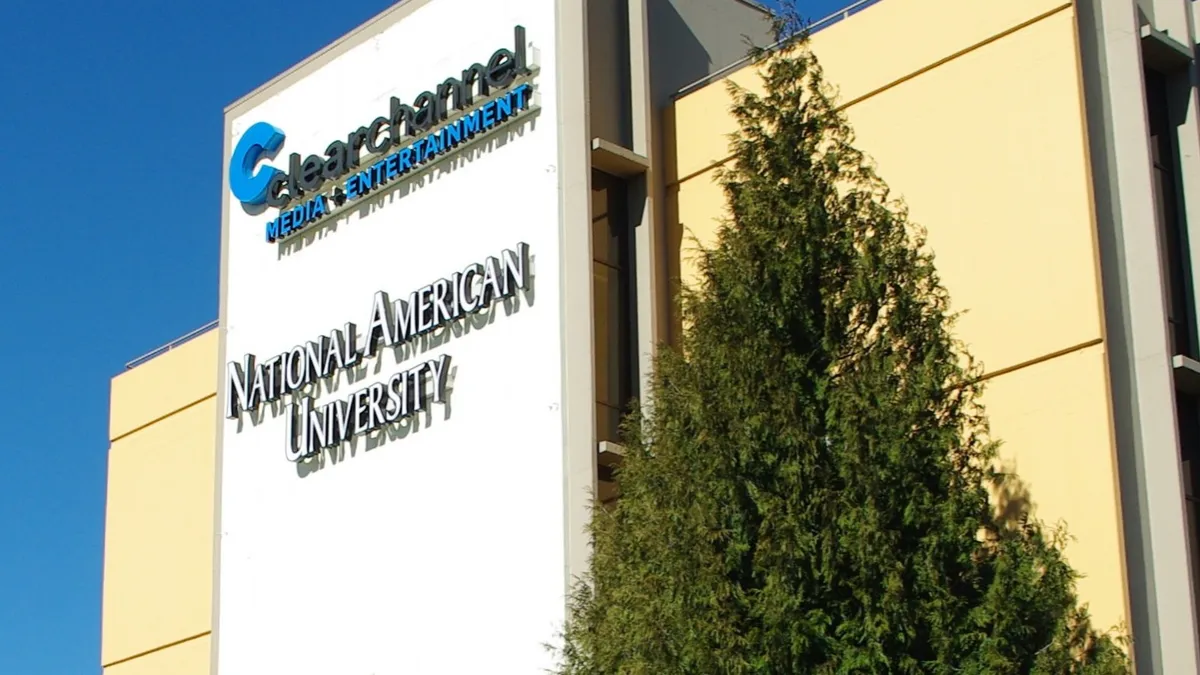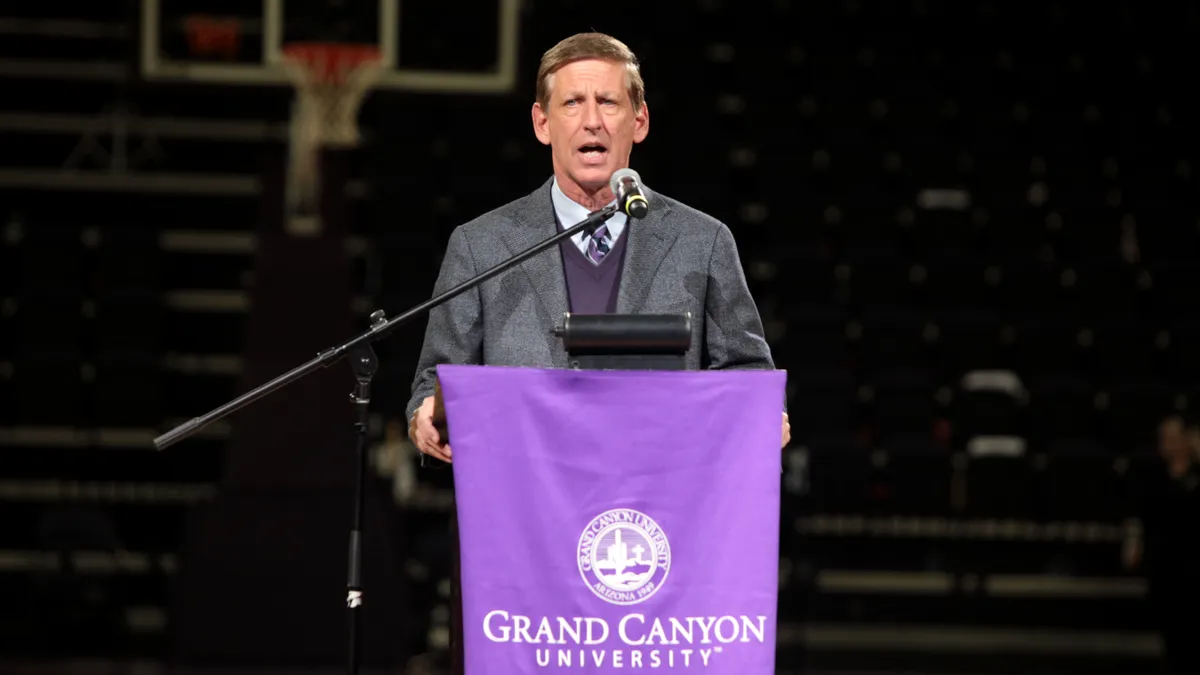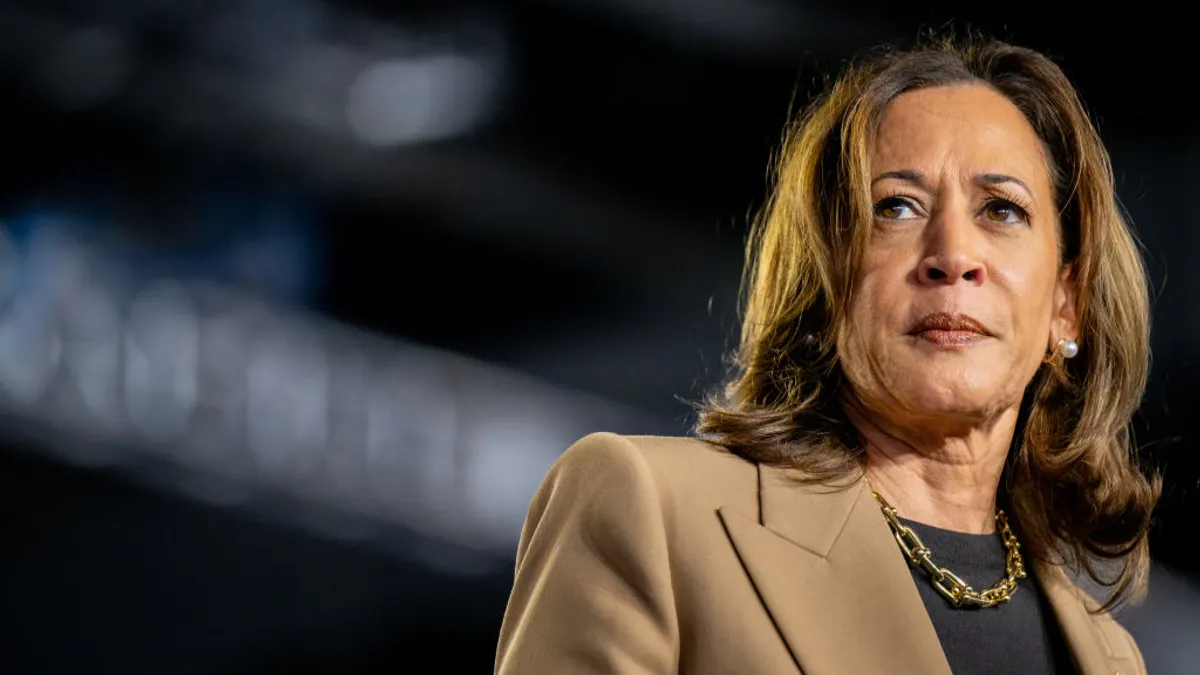In January, the company that operates National American University added language to a securities filing that probably no corporate executive enjoys having to say.
Management noted the company's $8.7 million working capital deficiency and cash shortage raised "substantial doubt regarding the Company's ability to continue as a going concern." In other words, the for-profit college operator might not survive the next 12 months.
Accounting guidelines for when a company must issue such warnings were laid out in 2014 and got their first major test when Sears Holdings issued a "going concern" warning in a 2017 earnings report, tanking its stock and roiling the retail world. (Sears would go on to file for Chapter 11 bankruptcy protection about a year and a half later and faced potential liquidation before its former CEO bought its remaining stores.)
Of course, National American is in the education business, not retail. Market dynamics aside, a shutdown would mean leaving more than 1,000 employees jobless. And in this case, the customers are students, many of whose lives would be severely disrupted if their college were to go out of business. The recent closures of Education Corporation of America and Vatterott Educational Centers reminded the higher ed world just how disruptive shuttering a college chain can be.
National American faces some steep challenges, including declining enrollment and heavy competition in online education, where its board has already approved a strategic pivot. What happens over the coming months will not only indicate National American's future but will also reflect on for-profit colleges' efforts to redefine their business and financial models.
'Too small to be efficient'
National American traces its roots to 1941, when it started providing specialized business training to women in western South Dakota under the name National School of Business. By the 1970s, it had expanded to target working adults and other nontraditional college students, adding branch campuses in Colorado, Minnesota and South Dakota.
It is a relatively small player in the for-profit field. National American currently lists 33 physical locations on its website, though its latest earnings report said just 26 campuses are still operating. The company closed 13 campuses in the period ending Nov. 30. Another 14 are open but teaching out students. NAUH has also suspended new student enrollment in 34 of its 128 programs as it winds them down.
By comparison, ECA, leading up to its closure in December, had more than 70 campuses and some 20,000 students among its Virginia College, Brightwood Career Institute and other banners. As of Nov. 30, National American had 497 students attending its physical locations, around 3,800 online students and 523 students in hybrid programs.
That more modest scale can explain some of the problems with the company's enrollment, revenue and bottom line.
"At some level, even though they're offering programs online, they're still small," said Trace Urdan, a managing director at investment firm Tyton Partners who analyzes the for-profit sector. "And so to be heard, the ability to leverage your marketing expense across a large student population is difficult, and you kind of become too small to be efficient."
Scale is just one issue. National American's business and financial troubles run deep. Numbers alone paint a bleak picture. Enrollment fell 15.7% from fiscal year 2017 to 2018 and 18.1% from 2016 to 2017. Revenues fell every year from 2014 to 2018, declining by nearly 40% during that time. The company posted a net loss for the last three years, with the amount nearly doubling between 2017 and 2018, when it reached $12.2 million.
"The kind of student they serve is increasingly comfortable with online. The physical locations become less meaningful or appealing, which create financial challenges when you have underused physical capacity."

Trace Urdan
Managing director, Tyton Partners
National American's stock has been falling along with its revenue and bottom line. The company's market cap dwindled so much that it fell below Nasdaq's required levels — $5 million — prompting the company to move to a penny stock exchange earlier this year.
Of even more immediate concern, the company had $530,000 in cash at the close of the quarter ending Nov. 30, about 10% of what it was a year ago. Working capital went from $4.4 million in November 2017 to negative $8.7 million in the most recent period. The tight liquidity position could become even more constrained when an $800,000 loan payment comes due on May 17.
CreditRiskMonitor, a service that tracks corporate finances and risk, has estimated National American’s probability of filing for bankruptcy at between 9.99% and 50% over the last three months, based on its proprietary FRISK scoring.
To shore up cash, the company has sold planes and slashed "numerous" jobs, amounting to a $1.5 million cut in yearly payroll costs.
Amid its cash struggles, the company has turned over chief financial officers. Earlier this month it brought in Thomas Bickart as its new CFO. Bickart was previously CFO of Edison Learning and of TCI College of Technology in New York City, which closed the year after he left. He replaces David Heflin, who turned in his resignation in January.
Shrinking footprint
For-profits, many of which are workforce-oriented, have seen enrollment decline as unemployment shrinks. For National American, the problem is exacerbated by the shorter associate and vocational degree programs in its mix.
Those programs are "highly cyclical," Urdan said, "meaning that when there's full employment — if people can get 15 bucks an hour working at Jamba Juice or whatever — there's less desire to go to school."
National American's target demographic of working adults is also being catered to by a growing number of online programs. While that creates opportunity for the company as it pivots to online, it also exposes the chain to risk.
"The kind of student they serve is increasingly comfortable with online," Urdan said. "The physical locations become less meaningful or appealing, which create financial challenges when you have underused physical capacity."
He also noted that as National American closes campuses and becomes less attached to geography, it loses some of its "ability to be heard" when recruiting, especially given its smaller scale. Online, especially in its bachelor's degree offerings, National American competes with "everybody," including for-profits like Strayer University and the University of Phoenix and nonprofits like Western Governors University and Southern New Hampshire University, Urdan said.
Shifting online is a cornerstone of National American's turnaround strategy, approved by its board last year, as well as its efforts to shore up finances. "Although the operational change may put additional pressure on revenue in the immediate future, the university expects a significant decrease in expenses with a lesser impact on revenue in the long run," National American CEO Ronald Shape wrote in an email. (Shape declined a phone interview.)
Before its board approved the new strategic plan, in October, National American was already deep into its shift online, having offered online degrees since 1998. The company is also targeting military students, and it beefed up its security and intelligence training offerings through the acquisition of Henley-Putnam University, a deal that closed last March. NAU has seen growth in Canadian and graduate student enrollment as well.
The 'spiral effect'
January's going concern warning raised the specter of possible closure. There would be some irony in that worst-case scenario, given National American historically recruited students from other for-profits that have closed in the past half decade.
"National American, by taking these students, prevented a real nightmare," said Dahn Shaulis, a self-described higher ed watchdog who authors the College Meltdown blog. But often those students just get cycled through by more troubled colleges, attending two or even three schools that have failed, he added. "If you look at it as this jungle, a lot of other schools have already been knocked out. You can see all of these schools becoming extinct or killed off" eventually, he said.
National American's going concern warning doesn't necessarily portend a sudden, disruptive closing. Short of a turnaround, a sale may be another possible fate, though the options may be limited.
"There's no obvious candidate, for a couple of reasons," Urdan said. A big one is National American's broad range of offerings, tailored to appeal to as many students as possible. "It's inefficient to have to be marketing all those different programs to all those different students," he said. "Their value proposition is all over the place."
Program complexity, plus National American's lack of online scale, could make it unappealing to other for-profits. That leaves a private equity buyer or even a public college the more likely suitor in an acquisition scenario, in Urdan's view.
"You're seeing a lot of state schools take the working-adult population much more seriously," he said, pointing to the Purdue-Kaplan deal. "Is there a state university that might be interested in that? It might be able to absorb a lot of different program offerings, and it might appreciate the expertise and infrastructure and even the student population [that National American serves]."
National American also has a better reputation than some for-profits. "National American is sort of under the radar, there are not really any scandals," Urdan said. That is not to say the company is without baggage. National American was recently sued by students in Missouri over allegations of fraud and misrepresentation of educational quality, according to securities filings. The company has also been hit with a whistleblower lawsuit, which is still being litigated, over claims it defrauded the federal government out of Title IV funds.
"It's inefficient to have to be marketing all those different programs to all those different students. Their value proposition is all over the place."

Trace Urdan
Managing director, Tyton Partners
Whatever the outcome, National American's challenges run deep, and they reflect those of the sector as a whole, which rushed to add capacity as students returned to college in the tight labor market during and after the Great Recession. Now many of those colleges are saddled with expensive leases and face increased competition for students in a booming economy.
As Urdan points out, declining enrollment can flip for-profits' financial model on its head.
"This is a great business when it's growing and it's an awful business when it's in decline," he said, describing a "spiral effect" where the workforce-oriented colleges operate with ever-growing working capital as students pay for their services in advance with federal aid dollars.
"When that reverses, and especially if it reverses in a precipitous way, it wreaks havoc on the financial structure of the institution," Urdan said. "Anytime you see one these institutions that has this sort of consistent pace of enrollment decline — it's not good." Even if a college’s enrollment and financial numbers look good in the short term, he said, they are likely trending one way or the other.
Reversing National American's recent history of enrollment declines could prove daunting. "Once that trend starts in a negative direction it's hard to turn it around," Urdan said. "It starts to create all kinds of cracks and pressures."






















